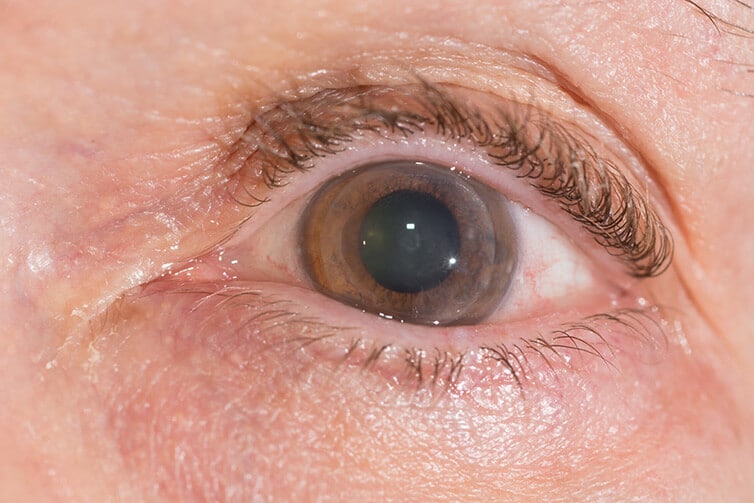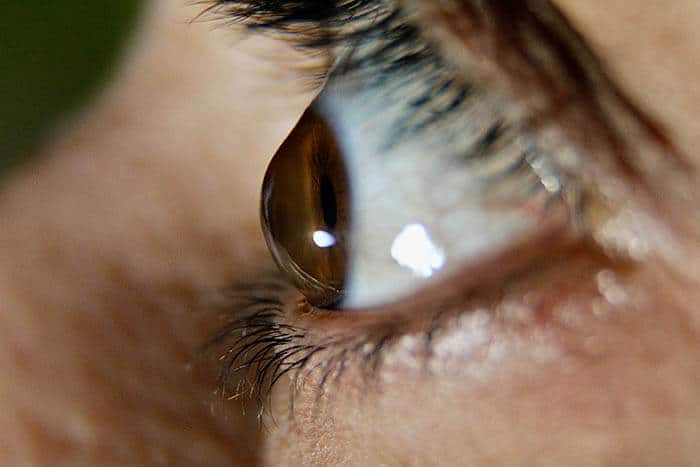PK (Penetrating Keratoplasty)

What is Penetrating Keratoplasty?
Penetrating keratoplasty removes and replaces the entire cornea. This is also known as full-thickness replacement, when it is compared with other methods that have been developed more recently that don’t replace the entire cornea, but portions of it.
A corneal transplant is known as penetrating keratoplasty. This becomes necessary when the curvature of the cornea, the transparent covering on the eye’s anterior wall, is too steep or too flat to be treated with other methods.
Penetrating keratoplasty is the traditional method for removing and replacing the cornea with donor tissue.
What conditions might call for penetrating keratoplasty?

If a person suffers poor vision or chronic pain from a corneal condition, disease, or injury, it’s likely they’d be right for penetrating keratoplasty. It is usually the best treatment option for those with more severe corneal disease.
These are the conditions for which Dr. Groat could perform a penetrating keratoplasty:
- Corneal edema, ulceration, or dystrophy
- Fuch’s dystrophy
- Keratoconus
- Keratitis or trichiasis
- Pterygia
- Traumatic injury
- Bacterial, fungal, viral, or protozoan infection
- Rejection of a previous graft
Who would be a good candidate for penetrating keratoplasty?
Anyone with the more serious corneal disease could be right for this surgery with Dr. Groat. The conditions listed above cover most of the situations where a person would be a candidate. Only people with active eye infections or other inflammation cannot have this surgery. The condition needs to be resolved first.
What can I expect before the procedure?
Prior to this procedure, you’ll have a thorough eye exam. Dr. Groat will be looking for any conditions that could lead to complications after your keratoplasty. He will also take measurements to determine the size of the donor cornea you’ll need.
Also, if you have another unrelated eye problem, such as an eye infection or any type of eye inflammation, that condition will need to be treated and resolved before you can have penetrating keratoplasty.
What can I expect after my procedure?
Once Dr. Groat has completed your cornea transplant, this is what you can expect:
- Medications — You’ll be prescribed eyedrops and sometimes oral medications. These will help prevent infection, and control swelling and pain. Steroid eyedrops are also used to keep your body’s immune system from trying to reject the donor tissue.
- Eye protection — Eye shields or glasses will be worn as your eye heals.
- Take it slow — After this surgery, you’ll need to take things slow and easy. You cannot rush things like lifting and exercise, as you need to keep blood pressure to the head and face from elevating. Strenuous exercise will need to wait several weeks.
- Work — As long as your job isn’t physical, most patients can return to work in just a week. This can vary based on the individual recovery.
What Our Patients Have to Say!
“Dr. Groat’s excellent care and superb surgical skills cured my deteriorating eyesight. Cornea layer transplants and new lenses for both eyes have been incredible. I am grateful for his work and the professionalism of his staff, and highly recommend their services!”
– DAVID K.
What are the risks involved with penetrating keratoplasty?
As with any type of surgery, there are risks involved, such as infection, reaction to anesthesia, excessive bleeding, and the like. These are uncommon with this procedure. These are the risks associated specifically with penetrating keratoplasty:
- Graft rejection
- Scarring
- Postsurgical infection
- Leakage from the incision site
- Astigmatism, nearsightedness, farsightedness
Vision problems such as astigmatism can be addressed with corrective eyeglasses or contact lenses.
When will I be able to get back to my normal activities after a corneal transplant?
Most patients can return to work within a week after surgery, depending on your job and how quickly your vision begins to improve.
As mentioned above, you’ll need to be careful with lifting, as you need to avoid increasing blood pressure to the head and face. Heavy, strenuous exercise and lifting are prohibited for a number of weeks; Dr. Groat will discuss this with you.
Going to the beach will definitely be out for a period of months, maybe longer. You cannot risk bacteria or even sand getting into your eyes. Pools can be even more problematic, due to the bacteria present. The pressure placed on your eyes when you submerge your head is also an issue.
Is penetrating keratoplasty covered by insurance?
Yes. These procedures are deemed necessary to prevent further vision degradation. As such, they are covered by health insurance. Of course, this can vary depending upon your individual plan and provider.
What results can be achieved with a corneal transplant?
A cornea transplant with penetrating keratoplasty can restore vision, reduce pain, and improve the appearance of a damaged or diseased cornea. What you can expect to achieve with these surgeries with Dr. Groat depends in part upon the reason you needed the surgery, as well as your overall health.
After the transplant, your initial vision will be worse than before your surgery. It will take several months for your vision to improve.
Once the outer layer of your cornea has healed, Dr. Groat will work to make adjustments to further improve your vision, if possible. These may include correcting any unevenness in the cornea (astigmatism). These can be due to stitches that hold your donor cornea in place. Dr. Groat can release some of these stitches and tighten others. Refractive errors that remain can be corrected with glasses, contact lenses, or, in some cases, laser eye surgery.
Schedule a Consultation
Learn more about Penetrating Keratoplasty (PK). Contact Cape Fear Cataract & Cornea, P.A. today! Call us at 910-769-4590 or click the button below to schedule a consultation with Dr. Brian Groat.
Request an Appointment“Excellent physician! I feel very comfortable with him taking care of my eyes. He is a honest physician. Staff and office is wonderful! I would highly recommend him for all your eye needs!”
“I moved to Wilmington 4 years ago and found Dr. Groat when I had an eye emergency. His precision and efficiency is undeniable. He has an existentive medical background that made me feel comfortable + his team is so sweet, they really made my experience bearable. I’ve been going back every year for eye exams!”


